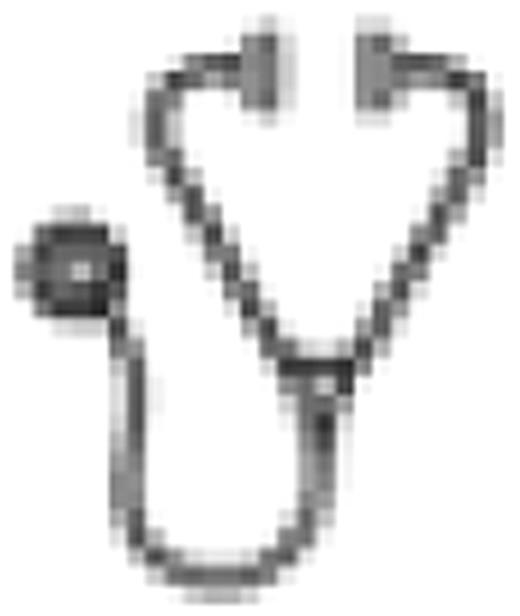Abstract
Abstract 1692
Acute leukemias of ambiguous lineage account for only 3–5% of all cases of acute leukemia and represent a heterogeneous group of rare, poorly characterized leukemia with adverse outcome. The aim of this study was to further molecularly characterize this rare subtype to gain insights into the pathogenesis of acute undifferentiated leukemia (AUL) and biphenotypic acute leukemia (BAL). These molecular insights may then lead to targeted treatment strategies for specific molecular subgroups.
The European Group for Immunologic Classification of Leukemia (EGIL) defines BAL as a single blast population with co-expression of myeloid- and lymphoid-associated antigens according to a scoring system. Cases without expression of lineage-specific antigens are designated as AUL. Based on the EGIL scoring system, we identified 11 and 20 adults with newly diagnosed AUL and BAL, respectively. In all samples, flow cytometry was performed using a panel of monoclonal antibodies for precursor cells (CD34, TdT), lymphoid-associated antigens, including surface and cytoplasmic antigens (CD79a, CD22, IgM, CD19, CD20, CD10, CD24, CD3, TCR, CD2, CD5, CD8, CD7, CD1a), and myeloid-associated antigens including myeloperoxidase, CD13, CD33, CD65s, CD117, CD14, CD15, CD64. In order to further molecularly characterize AUL and BAL, samples were studied for expression and genotype alterations of candidate genes with prognostic impact or with relevance in the pathogenesis of acute leukemias. The mRNA expression levels of BAALC, IGFBP7, MN1, and WT1 were determined by quantitative real-time PCR. In addition, samples were studied for WT1 mutations in exons 7 and 9, for FLT3 mutations [internal tandem duplications (ITD) and mutations in the tyrosine kinase domain (TKD835)], as well as for BCR-ABL (breakpoints: e1/a2; b3/a2; b2/a2) and MLL-AF4 rearrangements. Results were than compared to data generated from acute myeloid leukemia (AML; n = 75), acute T-lymphoblastic leukemia (T-ALL; n = 242) and B-precursor ALL (n = 368) patients.
AUL patients were characterized by a specific gene expression pattern. In particular, in AUL over-expression was shown for IGFBP7 (P = 0.01) and MN1 (P = 0.04) compared to BAL; for BAALC (P = 0.001), IGFBP7 (P = 0.0001) and MN1 (P = 0.02) compared to T-ALL; for BAALC (P = 0.02) and IGFBP7 (P = 0.001) compared to AML; as well as for IGFBP7 (P = 0.0001) compared to B-precursor ALL. Genotype alterations (WT1, FLT3, BCR-ABL, MLL-AF4) were not detectable in AUL samples.
The majority of BAL cases expressed either T-lineage plus myeloid antigens (n = 9; 45%) or B-lineage plus myeloid markers (n = 9; 45%), while co-expression of T/B lymphoid antigens was only seen in 2 samples of BAL. Cell surface expression of CD34 (≥ 20%) was most frequently found in BAL (17 of 20 cases; 85%). Gene expression studies revealed over-expression of BAALC and IGFBP7 in BAL compared to T-ALL, AML and B-precursor ALL, but less pronounced as shown for AUL. Moreover, BAL samples were characterized by frequent WT1 mutations in exon 7 (sufficient DNA was available in 14 samples of which 4 had WT1 mutations; 29%). In contrast, WT1 mutations were only found in 8% of T-ALL and have previously been reported in about 10% of AML patients with normal cytogenetics (Paschka et al, 2008). In concordance with published data, the BCR-ABL fusion gene was detected in 32% of BAL samples (19 samples studied of which 9 were positive for BCR-ABL). MLL-AF4 translocations and FLT3 mutations were not detectable in this BAL cohort.
Here we present a comprehensive molecular study investigating mRNA expression and genotype alterations in the poorly characterized subgroup of acute leukemias with ambiguous or lacking lineage commitment. We show that AUL and BAL patients share important prognostic features of both myeloid and lymphoid leukemias. Over-expression of stem cell associated genes (BAALC and IGFBP7) and genes associated with an adverse prognosis (BAALC and MN1) was most prominent in AUL. As lineage-directed therapies are likely ineffective for these high-risk patients and the fact that AUL lack known specific molecular targets, further studies are warranted to unravel molecular aberrations, which might allow the development of more specific therapies. BAL patients however, were characterized by genetic aberrations including BCR-ABL rearrangements and WT1 mutations, which may imply targeted therapy options.
No relevant conflicts of interest to declare.

This icon denotes an abstract that is clinically relevant.
Author notes
Asterisk with author names denotes non-ASH members.

This feature is available to Subscribers Only
Sign In or Create an Account Close Modal